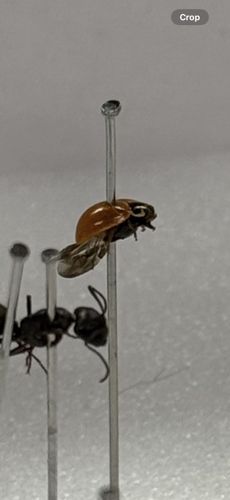Ladybug (or Ladybird beetle)
Scientific Name: Coccinellidae
Order & Family: Order Coleoptera, Family Coccinellidae
Size: Typically 1-10 mm (0.04-0.4 inches) in length.

Natural Habitat
Gardens, agricultural fields, meadows, forests, and other areas with vegetation and prey (e.g., aphid infestations).
Diet & Feeding
Primarily predatory, feeding on soft-bodied insects like aphids, scale insects, mites, and mealybugs. Some species also consume pollen, nectar, or mildew.
Behavior Patterns
Ladybugs are generally solitary, but can aggregate in large numbers for overwintering. They are known for their distinctive dome-shaped bodies and often brightly colored elytra. Larvae are also predatory and can consume a significant number of prey. They undergo complete metamorphosis (egg, larva, pupa, adult).
Risks & Benefits
Highly beneficial insects, especially in agriculture and gardening, as they are natural predators of many common plant pests. They help control pest populations, reducing the need for chemical pesticides. Some non-native species, like the Harlequin ladybug (Harmonia axyridis), can become invasive and outcompete native ladybug species or aggregate inside homes during winter, which can be a nuisance.
Identified on: 9/19/2025